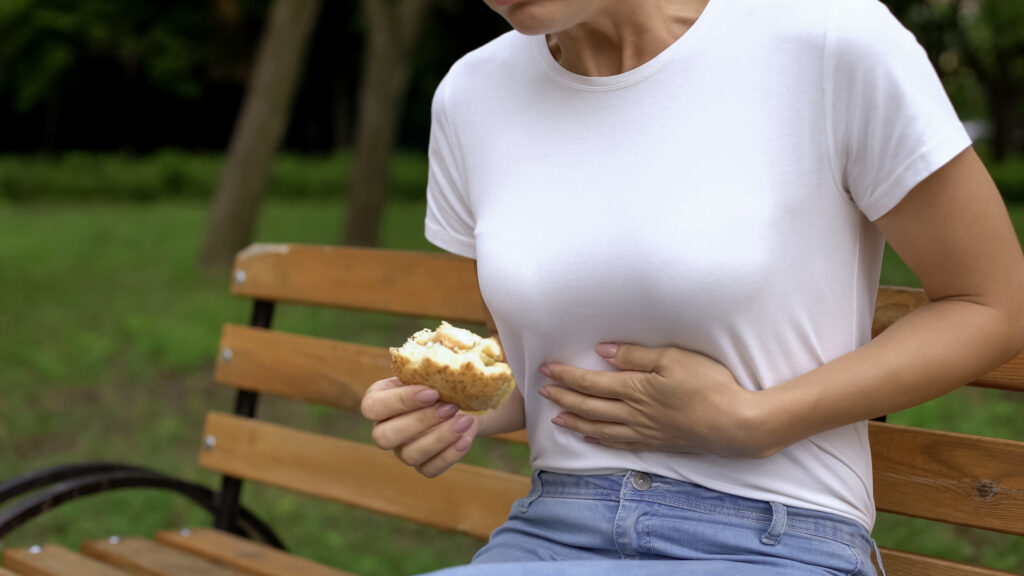
Everyone has woken up at some point with an upset stomach or diarrhea and wondered: is it something I ate? Food poisoning is incredibly common, with approximately one in six Americans experiencing symptoms of this condition each year.
Fortunately, many cases of food poisoning are considered mild. However, it's important to understand what to do if symptoms transition from moderate to severe and when it is time to seek medical help. These are the types of food poisoning, their varied symptoms, a typical treatment course, and how to prevent the condition in your kitchen.
Types of Food Poisoning
The symptoms of food poisoning occur after a toxic organism is introduced into your digestive system. Toxins can include a range of bacteria, fungi, and viruses, including:
- Campylobacter (found in undercooked dairy/meat products, raw poultry, and cross-contaminated foods)
- Salmonella (found in raw eggs, undercooked dairy/meat products, and raw fruit)
- Listeria (found in deli products and unpasteurized milk/cheeses)
- E. coli (found in contaminated food/water, undercooked beef, and unpasteurized milk)
- Norovirus (found in undercooked shellfish, fresh fruits, and leafy veggies)
- Clostridium perfringens (found in raw and unpasteurized meat and dairy, crops that have experienced direct contact with soil, and poorly refrigerated food)
- Clostridium botulinum (found in poorly preserved meat and vegetables, as well as honey/corn syrup when consumed by infants)
In most people with fully-functioning immune systems, these toxins cause a mild to moderate reaction. However, clostridium botulinum can lead to botulism, a rare yet fatal condition.
Symptoms of Food Poisoning
When toxins are trapped in your digestive system, your body goes into defense mode. Eager to purge the intrusive organisms, it reacts by attempting to reject them, resulting in:
- Vomiting
- Nausea
- Diarrhea
- Bloody stools
- Bloating
- Sharp stomach pain or cramping
- Headache
- Lethargy
- Fever
Symptoms may vary based on the type of bacteria behind the reaction, and those with compromised immune systems are more likely to experience severe symptoms. Whether your reaction is mild or intense, you should plan to check in with your healthcare provider at the onset of symptoms. They can help you rule out other illnesses and understand what to expect if symptoms worsen.
Treatment for Food Poisoning
Food poisoning often resolves within 48 hours, though you can take steps to ease discomfort and ensure a quick recovery. First and foremost, you need to rest. Hydrate more than normal to compensate for fluid loss through vomiting/diarrhea. Reintroduce food slowly, starting with easily digestible foods like bananas, rice, and saltine crackers. You should wait until symptoms have resolved before resuming your regular meal routine.
You should contact your doctor for more concerning symptoms, such as a persistent high fever, severe pain, or bloody diarrhea. You may need a round of antibiotics to eliminate the toxins from your gut. However, antibiotics can also wipe out healthy bacteria, so your healthcare provider likely won't prescribe this unless you are at risk of further complications. They may also test for parasites such as giardia, which can be wiped out with an antiparasitic.
In the rare case that food poisoning reaches your nervous system, you could experience more concerning symptoms. These may include scattered thinking, disorientation, vision troubles, skin numbness, and extreme weakness. These symptoms should never be ignored; immediately go to urgent care or the Emergency Room. Left untreated, this could lead to permanent organ damage.
Food Poisoning Prevention
The easiest way to avoid food poisoning is to ensure your food is well-packaged/stored, fresh, and properly prepared. Here are some general rules of thumb:
- Keep your kitchen sterilized. Wash everything before and after meals, including your counter, stove/burners, utensils, dishes, and cutting boards. Unwashed surfaces are a hotbed for bacteria.
- Clean your produce. Thoroughly wash produce before consuming fruits or veggies you picked up at the store. This helps eliminate lingering dirt, soil, and germs.
- Thoroughly cook your food. Ensure your food is cooked through (especially chicken and eggs). Always follow the written guidelines for how long to cook chicken, beef, pork, and other meats, including the inner temperature they need to reach before they are consumable.
- Don't cross-contaminate. Always switch out knives when moving between food groups, including transferring from raw meat to cooked meat. Never use a knife that you've used to cut meat or cheese to chop up vegetables or fruits.
- Don't leave refrigerated items out. If you're having a party or gathering, you may think leaving food on the counter is harmless. However, products like mayo, deli meat, and soft cheese can attract bacteria at an incredible speed.
By taking these steps, you can create a safer kitchen and lower the risk that you or your loved ones will develop a disruptive case of food poisoning.
Resource Links
"Food Poisoning Symptoms" via the CDC
"Food Poisoning: Diagnosis & Treatment" via the Mayo Clinic
"Food Poisoning: Symptoms & Causes" via the Mayo Clinic
"Food Poisoning: How to Know If You Have It & How Long It Can Last" via Houston Methodist
"Food poisoning" via NHS Inform
"Food Poisoning" via John Hopkins Medicine
"Food Poisoning" via Cleveland Clinic
"Fast Facts About Food Poisoning" via the CDC





